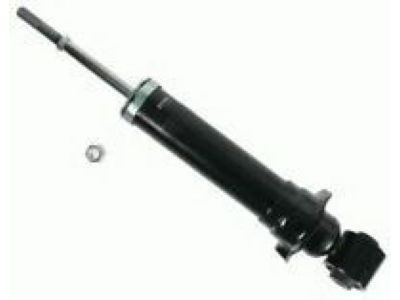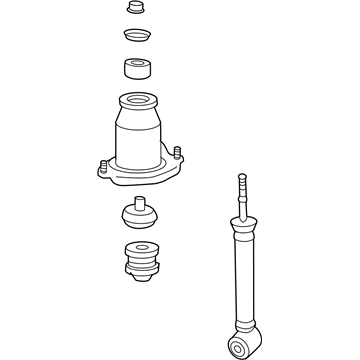×
ToyotaParts- Hello
- Login or Register
- Quick Links
- Live Chat
- Track Order
- Parts Availability
- RMA
- Help Center
- Contact Us
- Shop for
- Toyota Parts
- Scion Parts
My Garage
My Account
Cart
OEM 2006 Scion tC Shock Absorber
Suspension Shock Absorber- Select Vehicle by Model
- Select Vehicle by VIN
Select Vehicle by Model
orMake
Model
Year
Select Vehicle by VIN
For the most accurate results, select vehicle by your VIN (Vehicle Identification Number).
2 Shock Absorbers found

2006 Scion tC Shock Absorber, Rear Passenger Side
Part Number: 48530-80268$101.42 MSRP: $142.37You Save: $40.95 (29%)Ships in 1-2 Business DaysProduct Specifications- Other Name: Absorber Set, Rear Right-Hand; Suspension Shock Absorber; Strut Assembly Kit; Complete Strut; Shock; Absorber Assembly, Shock, Rear Passenger Side; Absorber Assembly, Shock, Rear Driver Side
- Manufacturer Note: MARK 48530-21140
- Position: Rear Passenger Side
- Item Weight: 3.10 Pounds
- Item Dimensions: 26.4 x 6.6 x 5.9 inches
- Condition: New
- Fitment Type: Direct Replacement
- SKU: 48530-80268
- Warranty: This genuine part is guaranteed by Toyota's factory warranty.
2006 Scion tC Shock Absorber
Part Number: 48530-80152$128.26 MSRP: $181.99You Save: $53.73 (30%)Ships in 1-3 Business DaysProduct Specifications- Other Name: Absorber Assembly, Shock; Shock; Absorber Assembly, Shock, Rear Passenger Side; Absorber Assembly, Shock, Rear Driver Side
- Manufacturer Note: MARK 48530-21140
- Item Weight: 6.50 Pounds
- Item Dimensions: 25.8 x 6.7 x 5.7 inches
- Condition: New
- Fitment Type: Direct Replacement
- SKU: 48530-80152
- Warranty: This genuine part is guaranteed by Toyota's factory warranty.
2006 Scion tC Shock Absorber
Looking for affordable OEM 2006 Scion tC Shock Absorber? Explore our comprehensive catalogue of genuine 2006 Scion tC Shock Absorber. All our parts are covered by the manufacturer's warranty. Plus, our straightforward return policy and speedy delivery service ensure an unparalleled shopping experience. We look forward to your visit!
2006 Scion tC Shock Absorber Parts Q&A
- Q: How to service and repair the front shock absorber with coil spring on 2006 Scion tC?A: To replace the coil spring in front shock absorber, take out the front wheel components and wiper. Unscrew the stabilizer connection and speed sensor and remove the shock absorber. Check and change where required. Installation It is recommended to resettle using the same installation instructions and of course with the right torque requirements and also safe disposal of the shock absorber.













